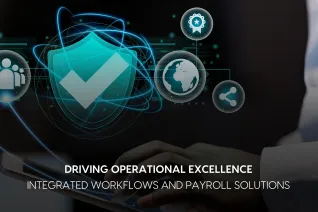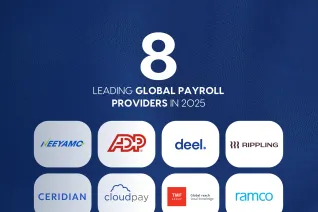Impact of Robotics in delivering HR Services

1. What is your take on robotics automation in the HR industry?
In any industry, repeated and manual tasks are good candidates for automation with bots. The HR industry is no different and has a vast potential for robotic automation.
The HR spectrum ranges from pre-on boarding to post-exit operations, and currently, several mundane and redundant tasks are done manually. The key here is to pick out those time-consuming activities at a mass level and try to replace them with software programs called "Bots."
Tasks like verifying the onboarding checklist, sending emails, validating payroll inputs and outputs, etc., are good candidates for automation.
Automation also improves the precision and quality of these activities, saving time and effort.
2. Can you name some standard HR processes where bots intervene to enhance the quality of work delivered? Has this drastically reduced manual intervention?
Sub-processes in onboarding, recruiting, and payroll processing are some HR processes where bots are commonly deployed. Let us take the case of Onboarding/exit; this evolving technology can easily automate the following tasks.
- Assess, prepare and create new joiner data
- Streamline information across disparate corporate systems for preparation on Day 1
- Consolidate leave input from business areas and feed to downstream systems
In the case of recruitment, there are several areas where automation can be applied. Take, for example, the following scenarios
- Processing candidate notifications for interviews, rejection, and feedback
- Candidate reviews – screening of CVs and online application form
The entire sequence of events, from sourcing resumes by referring to a Job Description to scheduling interviews and rolling out offers, can be automated through proper strategizing and planning.
However, these are just the tip of the iceberg; there are several other innovative aspects to this, if rightly explored, that could result in strengthening the HR processing landscape.
3. List some critical advantages of using robotics in HR processes?
- Time and cost savings
- Increased accuracy and efficiency
- Increased consistency of processing
- Improved productivity and throughput
4. What are the key trends to watch out for in the field of robotics in the next five years? What would be the most significant technology trends to look forward to in 2017?
I think robotics will be a massive game-changer across all industries. The wave has already started everywhere, and Robotics, along with Artificial Intelligence, Blockchain, and IoT, will create massive disruption in how businesses will operate in the future.
In the next five years, tools like Blue Prism, UI Path, and Automation Anywhere will be used exhaustively to automate manual processes across all industries. AI and Robotics will collaborate in areas where strategy and decision-making are required.
5. Do you think any particular industry is adopting robotics fast these days? As an authority in the field, could you point out the early adopters of RPA in the industry?
Retail and health care are two critical industries that are adopting robotics at a rapid pace. Take the case of Amazon, they already have drones manning their warehouses, and they also plan to do door delivery of goods using drones in the future.
Robots are also deployed in production and assembly lines in major factories to reduce dependency on Human Resources.
In the case of healthcare, robot-assisted surgeries are prevalent these days; we also have robots taking the role of general physicians by imbibing all the knowledge essential to analyze patient cases and take necessary actions. Artificially intelligent healthcare chatbots could evolve from treating many common ailments.
6. In closing, can you share a few learnings you've had over your professional exposure and experience in dealing with robotics and automation?
The most important thing to understand is that automation is not a new term. The era of automation started with the advent of computers and later the internet, where various tools were devised to solve business. From mainframes to client servers to cloud computing, automation has evolved in different phases encompassing different areas.
Robotics and AI have existed for a while now, and the thrust to use them has increased in the past couple of years due to the enormous growth in business processes due to the scarcity of the workforce and the ever-increasing cost of skilled and unskilled labor.
My final take is that, unlike earlier, robotics will make a massive dent in how business is being carried out now. Unless business owners realize this and make the right moves, they might question their survival amidst competitors who might have traveled far ahead of the curve.
Latest Resources
Stay informed with latest updates
If you're curious and have a thirst for knowledge pertaining to the HR, payroll, and EOR universe, don't miss out on subscribing to our resources.















